|
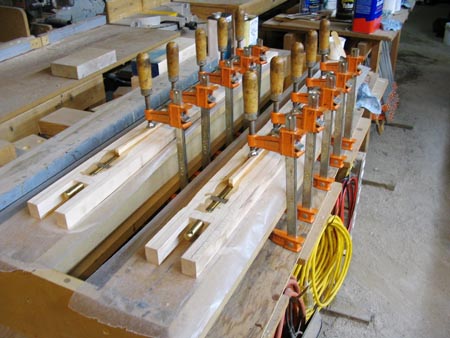
The truss rod components are waxed and cast into the neck in a bed of epoxy, clamping the rod into the proper
curve. All of the components, including the truss rod head assembly, are completely encapsulated in epoxy. In
this application, I use West Systems epoxy.
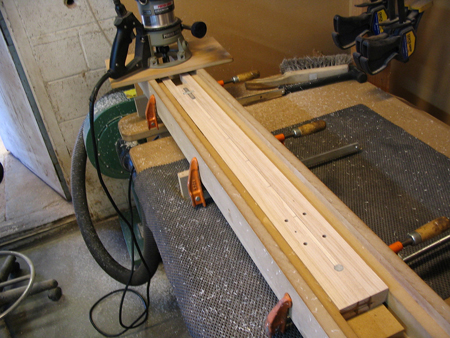
The neck blank goes back into the surfacing fixture and the top surface is routed clean and flat again.
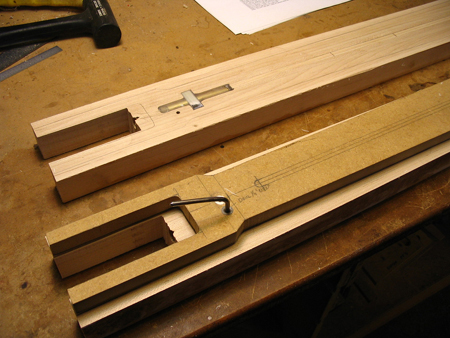
The neck master template is pinned back onto the top surface and the outline is redrawn.
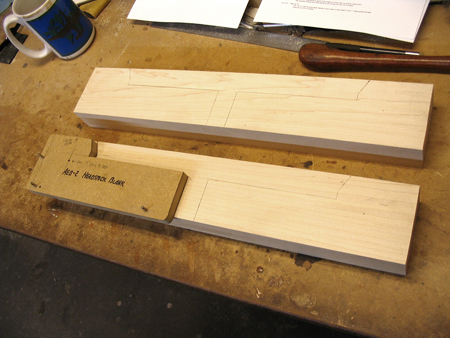
Meanwhile....I'm building up the block that will become the headstock. It starts out as a block of maple, which
has been pre-cut and stored for about a year. This template is used to draw the left and right hand halves onto
the board, and centerpunch the location of the hollowing hole. As with the neck, it's important that the halves
of the headstock are cut from the same board, and are aligned with the grain opposing. This is for long term
stability.
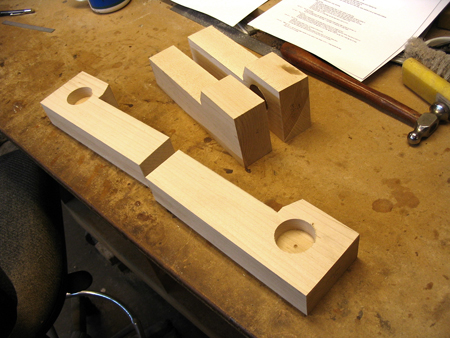
Here are the completed pairs of headstock block halves, marked and ready for gluing.
|
|
|
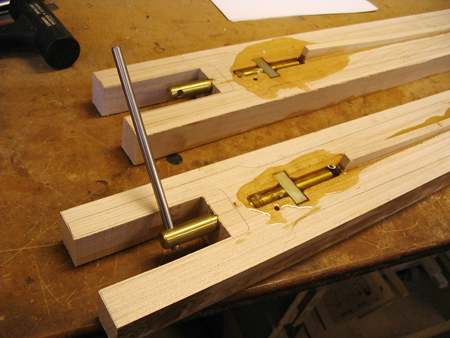
After the epoxy has cured, the brass mandrels are popped loose and pulled out of the truss rod holes.
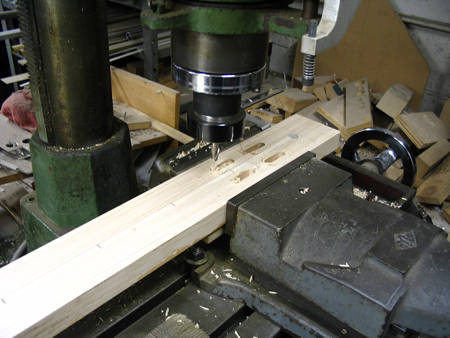
I use the milling machine to cut the pockets for the brass neck bars.
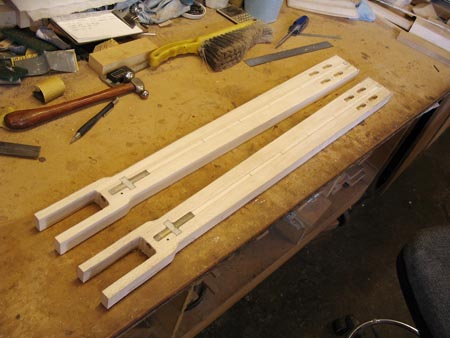
The rough shape of the neck blank is cut out with a bandsaw.
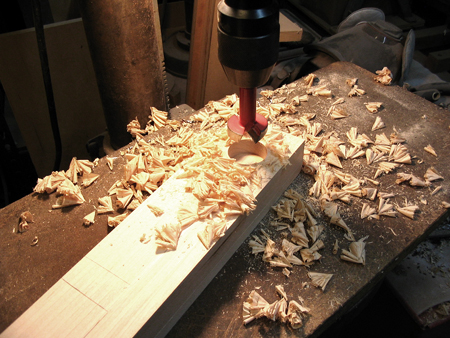
The hollowing hole is drilled into each block half using a 1 1/2" carbide forstner bit. These form a hollow
cylindrical chamber in the middle of the headstock. The purpose is simple...to reduce weight.
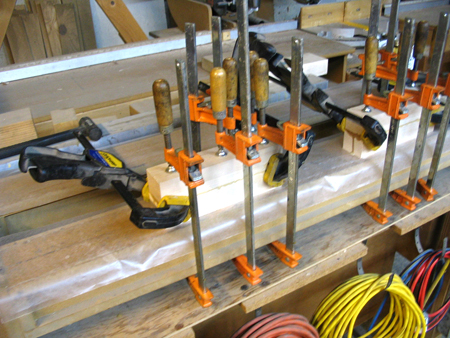
Like the neck strips, the headstock blocks are glued up with Smith's epoxy.
|
Next Page..
|

